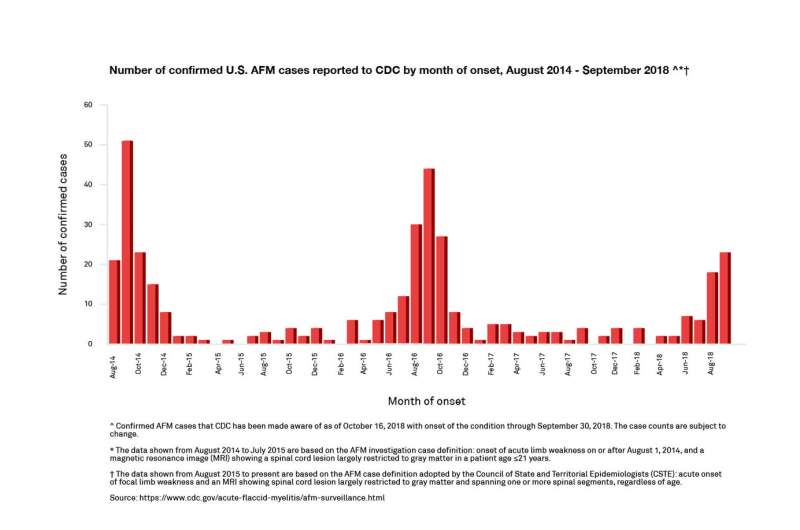The CDC confirms that a mysterious disease is paralyzing children across the US—but where does it come from?

A six-year-old Tennessee boy. Three children in Pittsburgh. Ten people from northern Illinois, all under 18.
They're scattered geographically, but they're connected. Or are they?
In early October, health departments began reporting cases of a "polio-like" disease, which these young people all showed signs of. The disease, called acute flaccid myelitis, targets the nervous system, most often in children. It causes sudden muscle weakness, but what drove many of these children's parents to action was a more extreme reaction: paralysis.
Ana Pastore y Piontti, an associate research scientist for the Laboratory for the Modeling of Biological and Sociotechnical Systems at Northeastern, has experience characterizing diseases. She served on teams that modeled the 2014 Ebola outbreak in West Africa, as well as the more recent spread of Zika in the Western Hemisphere.
"But these kinds of things are more difficult," said Pastore y Piontti of the reports of the new outbreak.
That's because in the case of acute flaccid myelitis, the cause is still unknown.
Acute flaccid myelitis is not a virus. It's a disease that can be caused by a virus, according to the Centers for Disease Control and Prevention. But it can also be caused by other factors, such as genetic conditions or environmental toxins.
And even if a case can be narrowed down to a virus, there are multiple kinds of viruses it could be. West Nile is one; others in the same family are also possible.
"In this case, there's no connection between the affected individuals," said Pastore y Piontti. "It's an outbreak of a disease with known symptoms and complications but unknown causes or routes of transmission."

On Tuesday, the CDC released an official count of confirmed cases of the disease for 2018: 62 cases in 22 states.
These states haven't been named, yet regional news outlets have been flagging cases at every stage, even when one is merely "suspected." Considering the lack of detail of the CDC data, there's no telling the location of cases that have been upgraded from "suspected" to "confirmed."
What's more, since health centers and laboratories aren't federally required to report cases of acute flaccid myelitis to the government like they are with other diseases, the number of cases could actually be much higher than the CDC reports.
So which areas of the country are most affected? That's unclear.
And will the number of cases climb? It's hard to know, said Pastore y Piontti.
Typically, researchers use information and data from previous outbreaks to assist in modeling the trajectory of a similar new one. But since the definitive cause and transmission pattern of this disease are still unknown, the possibility of modeling it is uncertain.
So what to do with something both untraceable and unpredictable?
For now, the CDC recommends preventive action: washing hands, staying up to date on vaccinations, and protecting against mosquitos, which can carry viruses.
Pastore y Piontti echoed that advice. "All we can do is just be preventive."
















